Cupán: Cups, vessels and drinking horns
A cup is generally known as a cupán or a cupa in modern Irish, but, despite appearances, neither word is a particularly recent borrowing. Cupa is found as early as the 13th century, and probably comes from the Middle English cuppe, from which we also get the modern English cup. A still older word, coppán, is thought to have been borrowed from the Latin cuppa. An even older, native word for cup is corn, which is generally used in modern Irish to refer to a cup won in competition, but in the medieval period it referred to a drinking vessel made from animal horn – indeed, corn has the same linguistic derivation as the English horn.
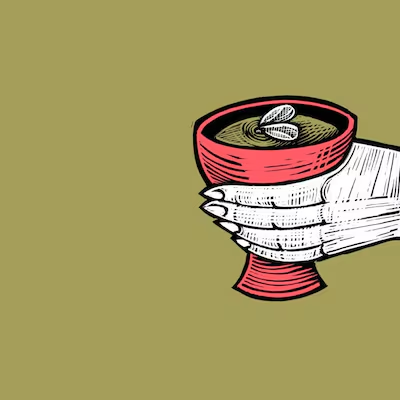
Drinking vessels were of considerable value in medieval Ireland. According to The Cattle Raid of Flidais, when the Ulstermen attacked Connacht they stole not only their gold and silver but also their cups (copana). The Annals of Tigernach record that, when the son of Mathgamain ua Cennétig of Munster was abducted in 1088, his captors demanded a ransom of cattle, gold, silver and drinking horns (cuirnn).
Drinking could be a strange business, however. According to The Courtship of Étaín, a medieval Irish tale, the unfortunate Étaín was turned into a fly by a female rival and, having survived various storms, eventually fell into the cup of the wife of an Ulster warrior, Étar. The woman drank the contents of the cup and became pregnant, allowing Étaín to be reborn in human form. Clearly you should watch what you drink.
Fliuch: It’s raining knives and forks
The rain is a common cause of complaint in modern Ireland, but it was a source of considerable anxiety in the Middle Ages, because of its destructive impact. The Annals of Ulster, for example, record that 900 was “a rainy year”, as a result of which “great scarcity affected the cattle”, and the Four Masters note that heavy rain destroyed the crops in 975. Lack of rain, on the other hand, appears as a marker of a good and true king. The Book of Invasions claims that there was no rain during the kingship of Echu son of Erc; the crops were not forgotten, however, but were watered by the morning dew.
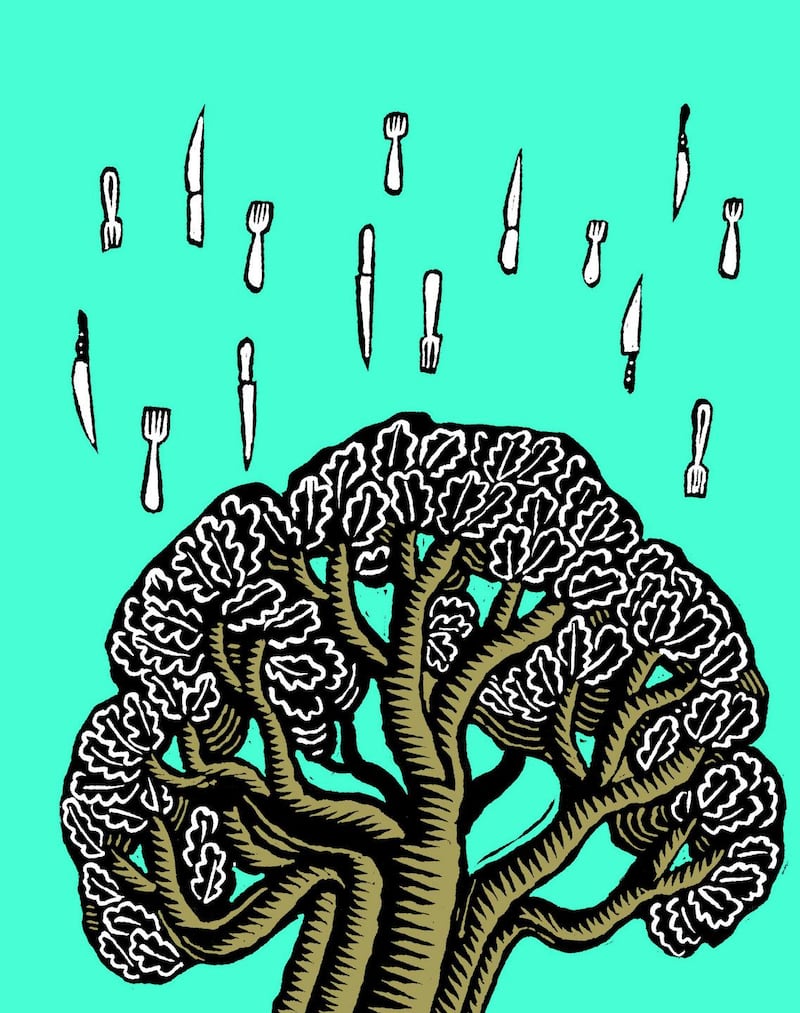
The word fleochud, which was the most common term for rain in medieval texts, is derived from fliuch, or wet, and so literally means wetting. Modern Irish dialects favour two other words, báisteach and fearthain. The former is found as early as the 12th century, and seems to be a cross between the words for baptism (baiste) and drowning (bá), almost certainly an ironic description of heavy rain. Fearthain is older and literally means pouring. We see the same verb in the phrase fearadh na fáilte, “a warm welcome”, or more literally “a pouring-out of welcome”.
Irish speakers remain inventive in the face of the penetrating misery of rainstorms. Where English talks of “raining cats and dogs”, Munster Irish invokes the more vivid and menacing image of “raining forks and knives” (ag cur foirc agus sceana).
Gruaig: Bad hair day
The common word for hair in modern Irish is gruaig, but this is rare in early medieval sources, where folt is much more common. Hair was generally worn long by men as well as women, and may have been targeted in fights, necessitating the introduction of laws against hair pulling. Punishable offences included foltgabál, or hair seizing, and foltgal, or pulling an opponent’s hair; cutting off a person’s hair was deemed an act of mutilation.
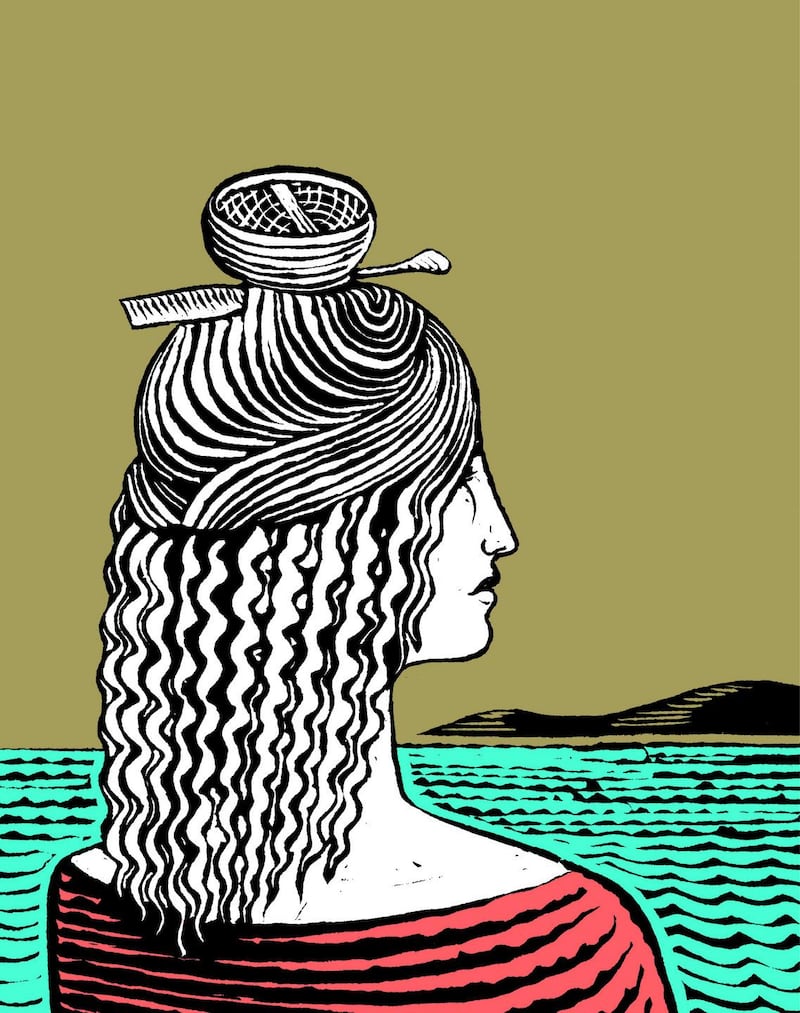
References to long, wavy, fair hair predominate in late-medieval poetry, and there is great inventiveness in descriptions of hairstyles. Ringleted hair was described as failgech, from fail, or ring, while clad, or ditch, denoted a parting in hair. A knot on top of the head was known as a curach, after the type of round, hide-covered boat called a coracle. In a ninth-century text, Cormac’s Glossary, baldness at the crown of the head is imaginatively termed sál tre assa, or heel through shoe.
Irish hairstyles often provoked disapproval among the English. A statute of 1297 proscribed English settlers from adopting the practice of some Irishmen in having their heads half-shaven with long hair tied up behind, known in Irish as the cúlán. Later, in 1537, King Henry VIII forbade the English from copying the glib, which was described by Edmund Spenser in A View of the Present State of Ireland (1596) as a "thick curled bush of hair, hanging down over their eyes". This survives in modern Irish as the somewhat derogatory term gliobach, meaning hairy or shaggy.
Caistéal: Irish and Norman architecture
The medieval Irish usually built their houses and churches in wood. From about the fifth to the 10th centuries most people lived in farmhouses, which were often round and surrounded by a bank of earth topped with a protective wooden palisade. But we do have examples of stone forts from the same period. These structures were frequently known by the word caiseal, which survives mostly famously in the name of Cashel, in Co Tipperary. Despite its antiquity, caiseal is not a native word but was borrowed from the Latin castellum, which pops up in different forms through the ages in Irish and also lies behind English word castle.
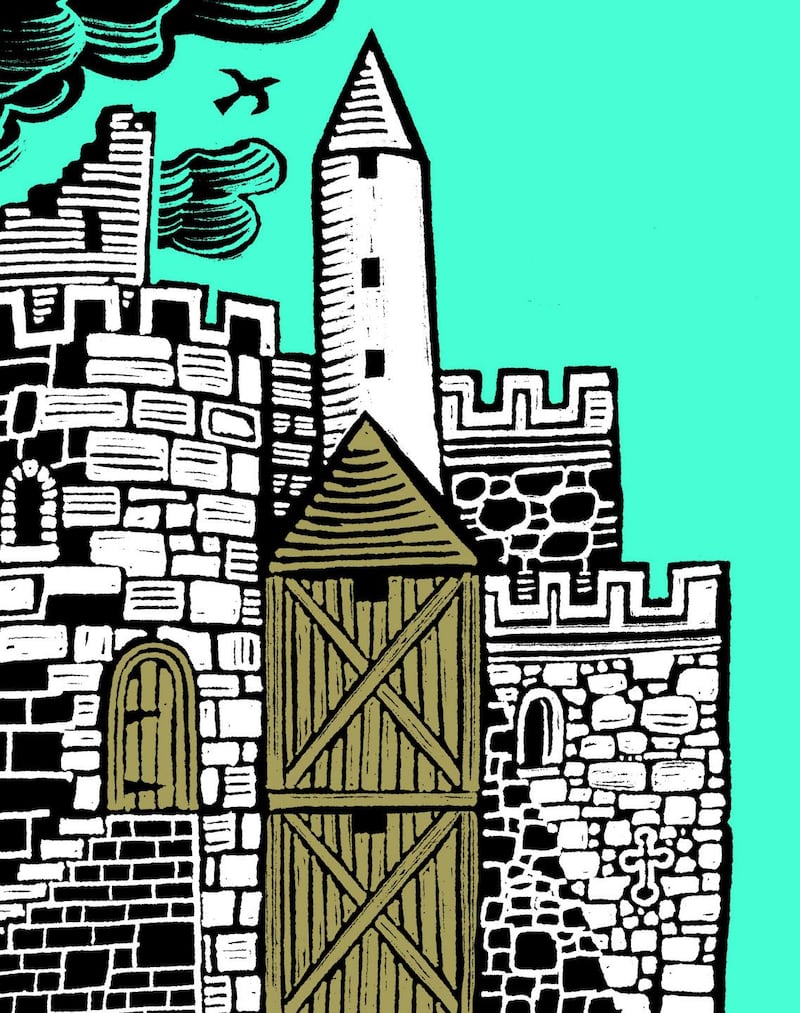
The Anglo-Normans introduced much more heavily fortified structures into Ireland. These castles would have been known by the French word castel, itself also derived from Latin castellum. This was then borrowed into Irish in the form caistél; the modern Irish caisléan is yet another derivative.
Norman influence can also be seen in the language of building, as in moirtél, or mortar, gísdáil, or joisting, and túr – tower or turret – all borrowed from French.
Loingeas: Exile
Exile has long been a feature of Ireland’s history, and the topic of exile is frequently reflected in song, a well-known example being The Pogues’ Fairytale of New York.
In modern Irish "exile" is deoraí, but in the early language the usual term was loinges. This derived from long, meaning ship, and originally denoted a fleet of ships or a naval expedition. Today the word continues in the sense of shipping, and it is preserved in the airline name Aer Lingus.
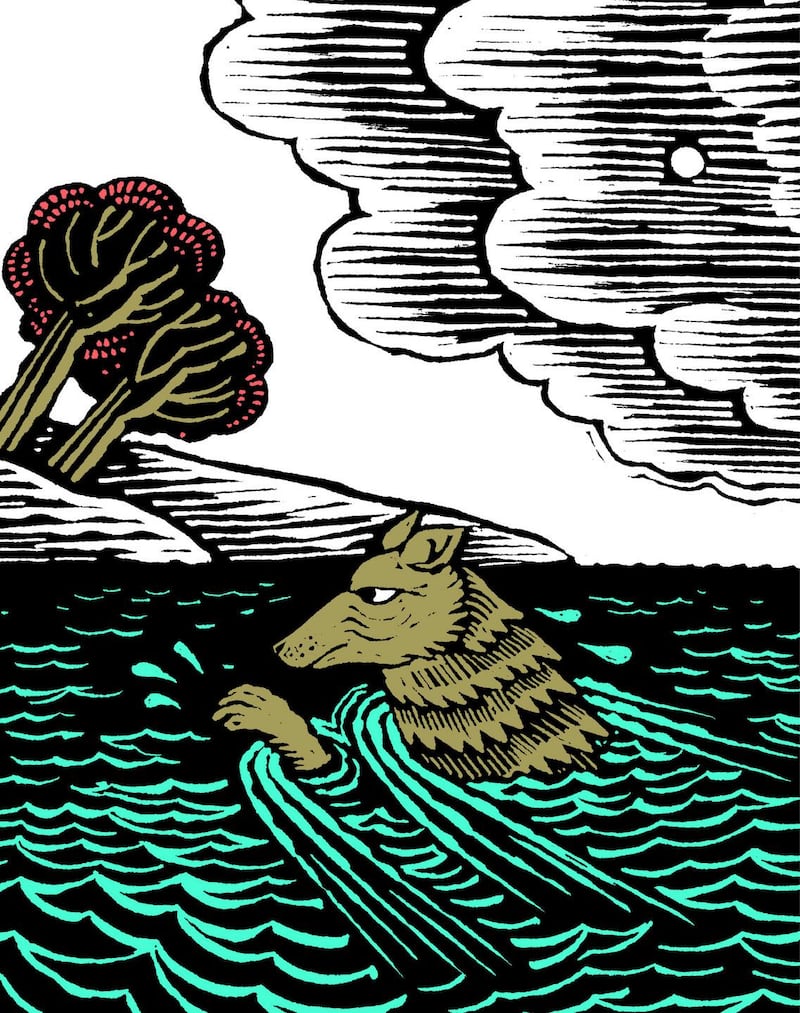
Exiles from overseas are given a particular status in early Irish law tracts. The term applied to them is cú glas, meaning grey hound or wolf. A related term, glasfhine, or grey kin, seems to have referred specifically to the offspring of an Irish woman and a Briton.
One of Ireland's most poignant tales of exile is The Exile of the Sons of Uisliu. This tells how Deirdre was betrothed to Conchobar, the king of Ulster, but she fell in love with the handsome Naoise and the two relocated to Scotland. They were eventually lured back to Ireland, but Conchobar treacherously slew Naoise, causing large numbers of Ulster warriors to go into exile in the enemy province of Connacht. At the end, Deirdre laments her situation in a powerful poem, which culminates with her dramatic suicide. This medieval story has since spawned many retellings, including in plays by WB Yeats (Deirdre, 1907) and John Millington Synge (Deirdre of the Sorrows, first performed in 1910).
Gall: Foreigners old and new
Gall, the Irish word for foreigner, has been applied to different types of outsider, and its ever-changing meanings provide an insight into the movement of people into Ireland in historical times.
The word originally referred to someone from Gaul (corresponding to much of modern France). When the Irish came into contact with Vikings, from the end of the eighth century, they were first defined by their heathenism, and designated pagans. In time the term Gall came to be applied to Vikings also. The Irish even distinguished between various groups of Scandinavian invaders, labelling them Finn-gall, or fair foreigner, and Dub-gall, or dark foreigner. Dubgall is preserved in the personal name Dougal and in family names such as McDowell.
When used in the epithet of Diarmait na nGall, gall seems to be a largely pejorative term. This name was conferred on the Leinster ruler Dermot MacMurrough, who approached King Henry II of England in 1167 for assistance in regaining his kingdom, and so sparked a chain of events that led to the coming of the Normans to Ireland. These events were described as gabháltas Gall, or the Norman invasion, and the meaning of gall had shifted once more.
When a new wave of English and Scottish plantation began in the 16th century, the term gall proved useful again. These recent incomers were called Nua-Ghaill – new-Gaill, or foreigners – in contrast to the Sean-Ghaill, or old-Gaill, who had been in Ireland since the 12th and 13th centuries, and had become thoroughly assimilated. Gall remains in use for different kinds of foreigners today.
Béarla: Whose language is it anyway?
Béarla is used in modern Irish as the term for the English language, but the word originally meant just speech or language.
The earliest form is actually bélrae, and this goes back ultimately to bél, meaning mouth (béal in modern Irish). A seventh-century text describing the 72 languages heard at the Tower of Babel refers to each as bérla (from which we get the modern Irish béarla). Irish was made up of the best bits of each of them, we are told, and it is designated bérla Érenn, or Ireland’s language.
Irish left its mark on English through words such as brogue (bróg), banshee (bean sí) and perhaps the most famous loanword of them all, whiskey (uisce beatha)
Sometimes, determining which language is in question in a medieval text depends entirely on context. Bérla gallda, or a foreign language, could be anything other than Irish. This was likely to have been French, after the coming of the Normans at the end of the 12th century, as the language of the original Norman settlers was French. But English gradually acquired the upper hand in administration, so that a reference to bérla gallda, or bérla alone, became almost invariably a reference to English.
Irish left its mark on English through words such as brogue (bróg), banshee (bean sí) and perhaps the most famous loanword of them all, whiskey (uisce beatha). A particularly droll chronicler records that in 1405 Richard Mag Raghnaill of Co Leitrim died after drinking excessive amounts of whiskey. Then, playing on the fact that uisce beatha means water of life, the writer added his own comment that whiskey had proved to be water of death (uiscce marbhtha) for Richard.
Cróga: Bloody brave
Although it was not used in the final release, the Donegal band Clannad composed a soundtrack for the 1995 film Braveheart, called Croí Cróga, a literal translation of the film's title. William Wallace, the Scottish hero of the film, led a bloody rebellion against the English, and it is a neat twist that the Irish cróga, which now means brave, signified bloody in the earlier language.
Cróga is derived from cró, which means blood or gore. It is used in the sense of bloody with reference to the war goddess, who is frequently depicted as a crow haunting the battlefield and foretelling men’s deaths in war. Although crows do not hunt, they will eat carrion, so the bloodied crow (badb cróda) is a fitting image for a supernatural being that passes through the slain corpses of warriors.
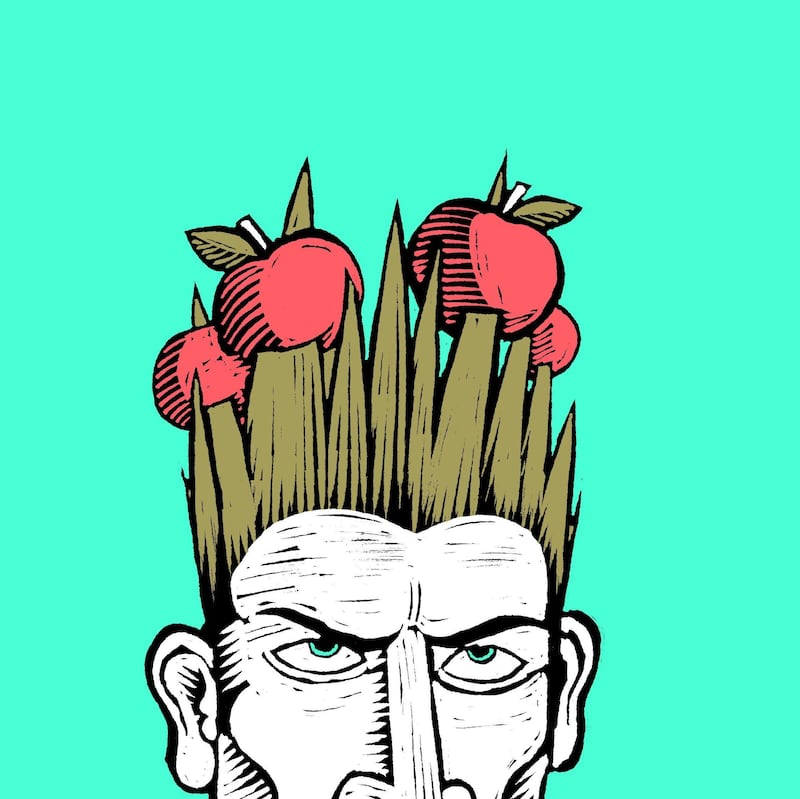
Bravery in battle was much prized in the medieval world, and the sense of cróga developed from bloody to fierce and, eventually, brave. The most iconic example of courage from medieval Ireland is the single-handed defence of Ulster by the territory’s pre-eminent warrior, Cú Chulainn, against the invading army of the rest of Ireland during the Cattle Raid of Cooley.
Cú Chulainn often embodies the destructive forces of the warrior, which can be used positively in defence of his homeland but also can threaten it. When incited to battle he undergoes an uncontrollable contortion or “warp spasm” (riastrad), with his body twisting and distorting wildly within its skin. His hair becomes so bristled that apples falling from a tree would become spiked on its strands. But in one tale, The Death of Aífe’s Only Son, a rigid observance of the ancient protocols of war leads Cú Chulainn to kill his own son. The intention, it seems, is to send out a message that rampant fury can slide into destructiveness and consume itself.
Bó: Cows, cow boys and cow paths
As a pastoral society, early Ireland placed a high value on cattle, particularly milk-producing cows. This is shown in the vocabulary, where words for cows and cattle are often closely associated with words for wealth. Slabrae, for example, originally meant stock, but as cattle were given so frequently as marriage dowries the term came to cover anything offered as a dowry, including gold and silver.
Cattle formed a basic unit of currency in early Irish law, with fines being determined most commonly in terms of cows. And social status was bound up with the possession of cattle
Cattle formed a basic unit of currency in early Irish law, with fines being determined most commonly in terms of cows. And social status was bound up with the possession of cattle. A bóaire, literally a cow freeman, was the lowest of the three main ranks of medieval Irish social hierarchy.
The centrality of cattle to early Irish society is reflected in several modern Irish words. The Modern Irish buachaill is a boy or young unmarried man. It is derived from bó and originally denoted a cowherd who could have been female or male. Today bóthar is the general term for a road, and its diminutive, bóithrín, is well-known in English as boreen. In origin, a bóthar was a cow path, a track the width of two cows. This was one of the five types of road identified in medieval Irish legal texts, the others being slige (on which two chariots could pass), rót (on which one chariot and two riders could pass), lámraite (a road connecting two major roads) and tógraite (a road leading to a forest or a river).
Punt: Pounds and pence
The punt – “pound” – was the main unit of currency in Ireland until the introduction of the euro, in 2002. It and the related word pingin, or penny, originally designated units of weight and were later used to refer to currency. Like most words beginning with P in Irish, they are loanwords from another language, in the case of punt and pingin from either Old English or Old Norse. English and Norse were also associated with the minting of Ireland’s first coins, in the late 10th century. These were struck by the Norse of Dublin but on the model of English prototypes.
Ireland continued to absorb other words to do with money as new coins were introduced after the Norman Conquest, in the late 12th century. These included pluirens, derived from florence, the older English name for the florin, and scilling, a shilling. But there are interesting native words too. After Henry VIII lowered the fineness of coins to a third silver and two-thirds copper, the silver rubbed off the high-relief part of the design of the king’s head, and so the king acquired the nickname Old Coppernose. It has been suggested that smuilcín, which resembles other words associated with the nose in Irish, might have been the Irish term for a coin worn in this way.
Money is known in modern Irish as airgead, which originally meant silver, and it was initially restricted to mean silver coin. Now it includes all forms of money, and as the Irish punt is no more, it is the most common money word in use today.
A History of Ireland in 100 Words, by Sharon Arbuthnot, Máire Ní Mhaonaigh and Gregory Toner, with illustrations by Joe McLaren, is published by the Royal Irish Academy





















